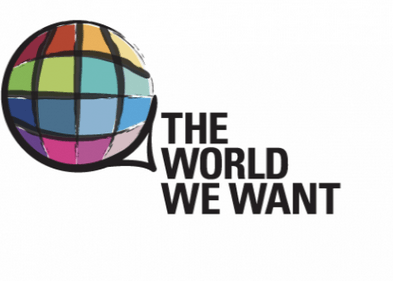Ed note. This article, by Managing Director at the World Bank Group Mahmoud Mohieldin is provided via Project Syndicate.
WASHINGTON, DC – As the 2015 target date for the Millennium Development Goals approaches, the United Nations is intensifying its efforts to foster debate about what comes next for promotion of development worldwide. The outcome of these discussions will shape policies and investment aimed at spurring GDP growth, strengthening human capital, and promoting more inclusive prosperity.
With the global population expected to reach nine billion people by 2050 – a significant proportion of whom will reside in developing or underdeveloped countries – the international community must improve access to education, health care, and employment opportunities worldwide. Meanwhile, the prospect of a rise in global temperature of more than 2°C (3.6°F) over pre-industrial levels by the end of this century (which would trigger global warming’s most damaging effects) calls for higher investment in sustainable urbanization, climate-smart agriculture, and social safety nets. Both factors challenge us to define, in the longer term, more sustainable patterns of production and consumption.
Governments, civil society, and the private sector must rise to the challenge, cooperating to find and implement creative solutions. But, first, they must anticipate the associated financing requirements, which will soon surpass the current capacities of governments and international donors, and take action now to activate new, reliable sources of financing.
To start, governments should design targeted, evidence-based policies and support the development of sound institutions. This would make government services more effective, while helping to catalyze additional development aid from traditional donors and mobilize private-sector resources.
In many countries, there is considerable scope for domestic resource mobilization. Broadening the tax base, improving tax administration, and closing gaps in the value-added tax could make a significant difference in lower-income countries, where tax revenues account for only about 10-14% of GDP, compared to 20-30% of GDP in high-income countries.
More equitable taxation would have a positive impact on governance, another important tool for mobilizing domestic resources. With improved corporate and public governance and clear transfer-pricing policies, resource-rich countries could shore up their capacity to negotiate fair contracts with extractive industries, balance revenues and expenditures over time, and manage their natural endowments more transparently.
Progress in these areas would help governments to channel their spending more effectively toward those who would benefit the most. For example, only 8% of the $409 billion spent on fossil-fuel subsidies in 2010 reached the poorest 20% of the population. A targeted support program could increase substantially the efficiency of spending, freeing up resources for education, health, and poverty eradication.
Furthermore, promoting financial deepening and inclusiveness could accelerate private-sector growth, creating more opportunities. Indeed, broader access to financial services would help the estimated 400 million micro, small, and medium-size enterprises in developing countries to prosper, while enabling the 2.5 billion people worldwide who currently lack access to such services to build their assets.
A deeper and more efficient financial sector would also reduce transaction costs and facilitate risk management. Local-currency bond markets could help to develop domestic investor bases and mobilize domestic savings to support long-term investments.
At the same time, the international community should work to improve the availability and effectiveness of official development assistance. The ODA target of 0.7% of GDP – agreed in 2002 at the International Conference on Financing for Development in Monterrey, Mexico – should motivate countries to increase their contributions. They can also take steps to make ODA more predictable from year to year.
Donors should structure aid to ensure that it supports sound national development policies and programs, rather than their own narrow interests. This is particularly relevant as emerging development partners, especially the BRICS (Brazil, Russia, India, China, and South Africa), offer new kinds of aid packages that incorporate investment and non-financial assistance.
Private charities, which have been instrumental in promoting innovation in fields such as health care, the environment, and education, could provide valuable insight into channeling aid more effectively. More generally, improving coordination among donors would help to maximize the impact of aid on the ground.
While ODA remains an important source of financing for fragile and very-low-income countries, it represents only 7% of net financial flows to developing countries, where foreign direct investment, remittances, long-term debt, and portfolio investment have a larger impact. Donors should leverage aid to “grow the pie” and to diversify financing sources for the world’s poorest countries by providing risk guarantees, innovative investment vehicles, debt syndication, and co-financing arrangements. Attracting even a fraction of the assets held by institutional investors, sovereign-wealth funds, and public pension funds could boost development finance substantially.
Diaspora populations are another major potential source of development financing. Reducing transfer costs, which average an estimated 9% of the value of transactions, would put more money into the hands of those who need it most. Tailoring financial products for diaspora communities could attract resources for investment, while reinforcing migrants’ ties – economic and otherwise – to their home countries.
Finally, the international community bears a special responsibility for delivering global public goods. The responsibility to preserve the environment, stem the spread of communicable diseases, strengthen the international financial architecture, enhance developing-country participation in the global trading system, and facilitate the exchange of knowledge lies at the intersection of national development priorities and global interests.
Duty-free, quota-free access to OECD markets, complemented by simpler, more transparent rules of origin, would raise GDP by 1% in the least-developed countries, lifting millions out of poverty. Investment in statistical capacity would help governments and businesses worldwide to make better policy decisions, based on a more accurate accounting of the associated costs and benefits.
The challenge of the post-2015 development agenda lies in finding creative solutions to support prosperity, equality, and sustainability. Together, governments, civil society, international organizations, and the private sector can improve the availability and quality of finance for development, and shape a better future for all.
— Mahmoud Mohieldin is Managing Director at the World Bank Group, and was formerly Egypt’s minister for investment.
